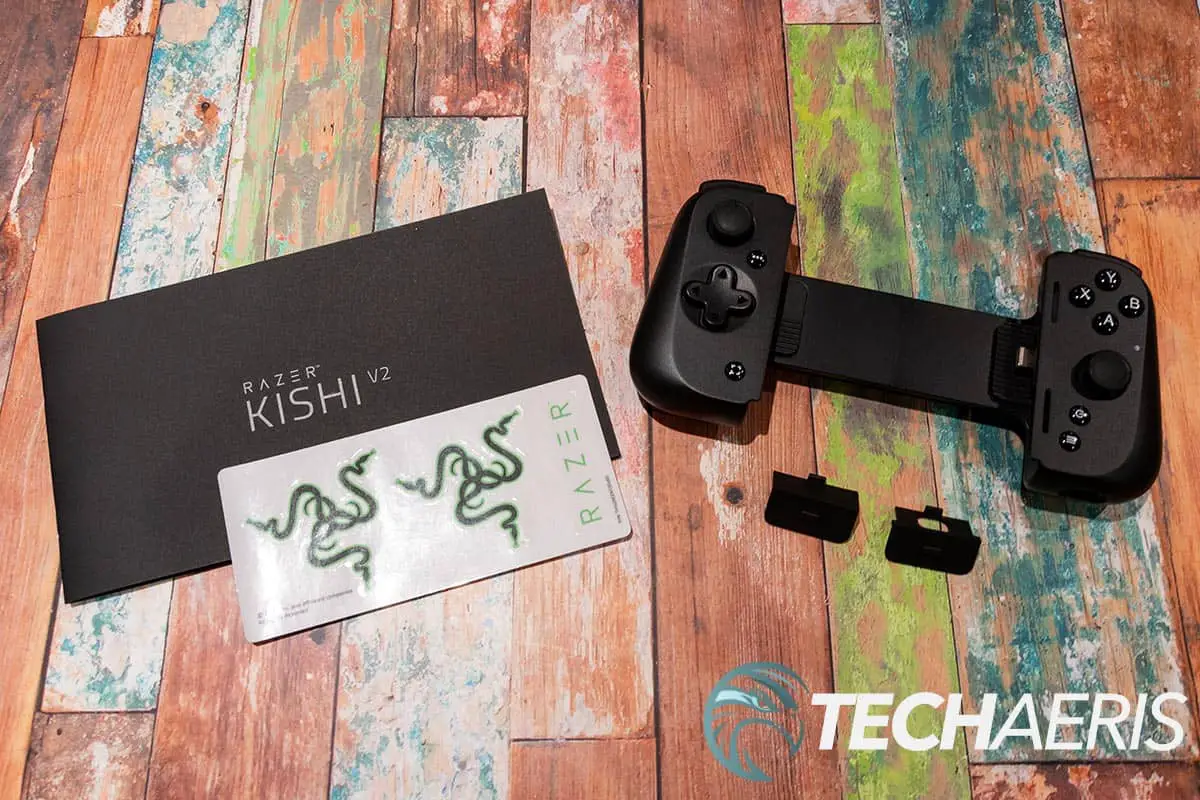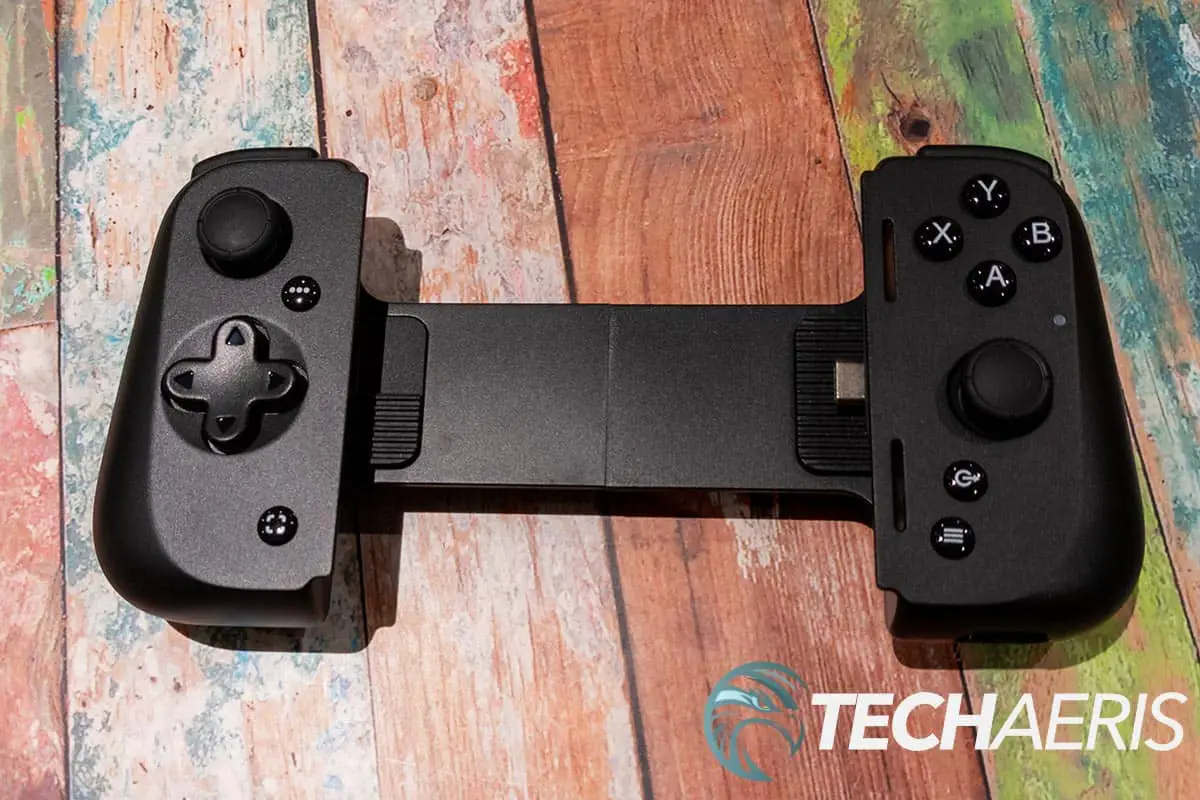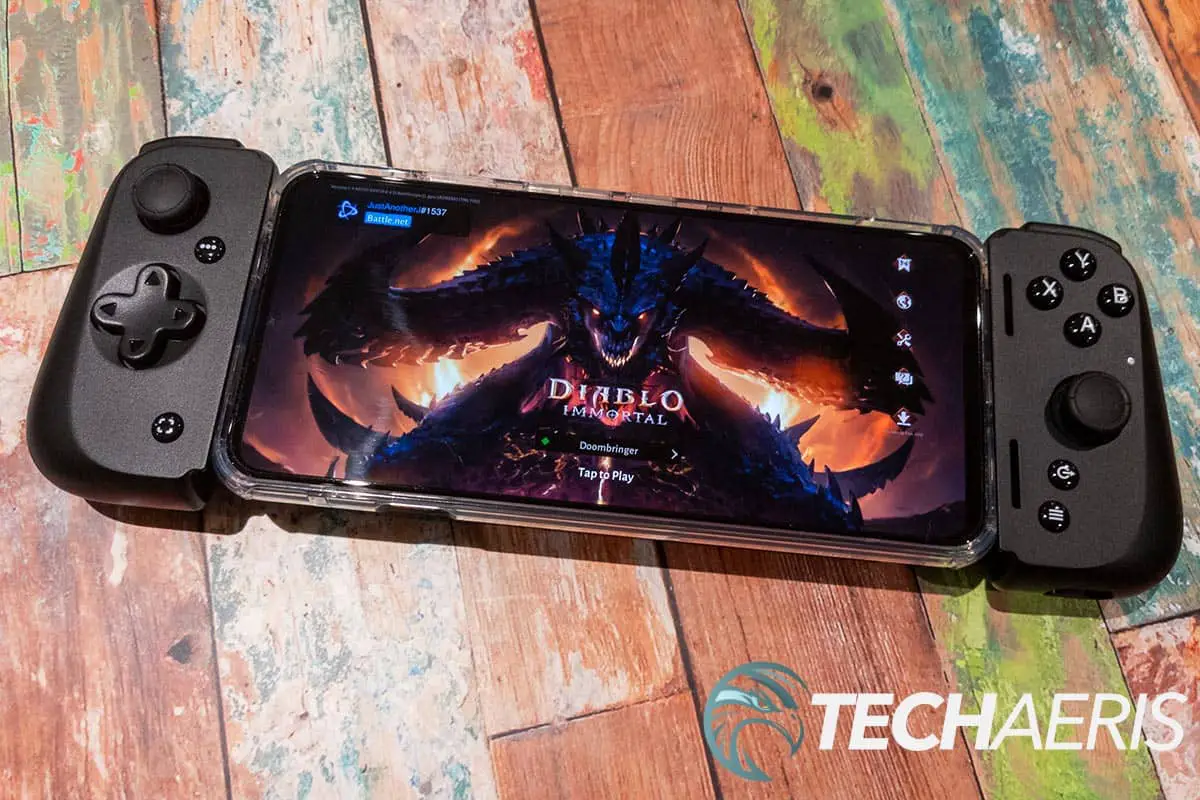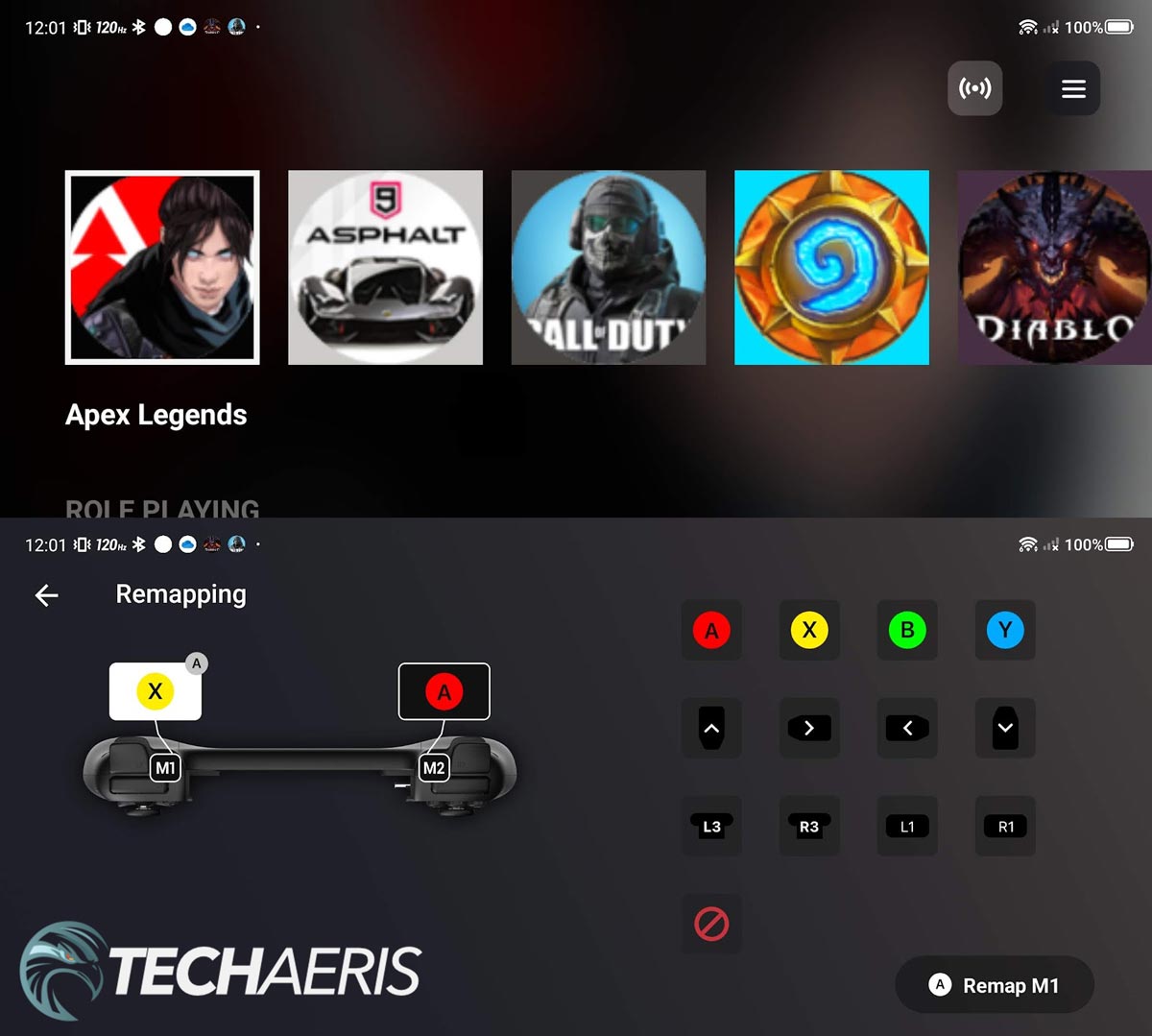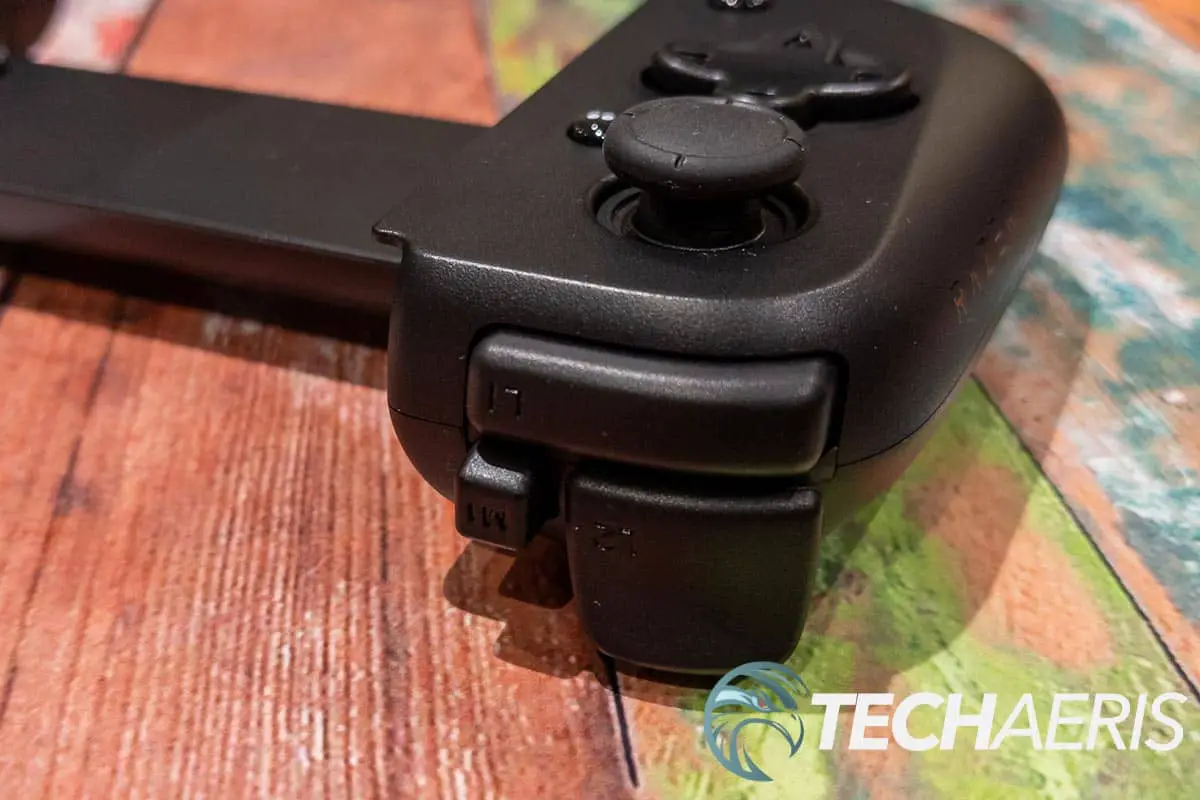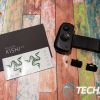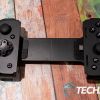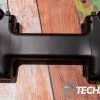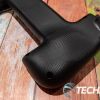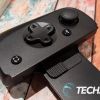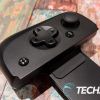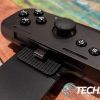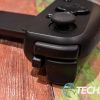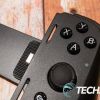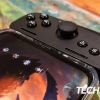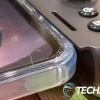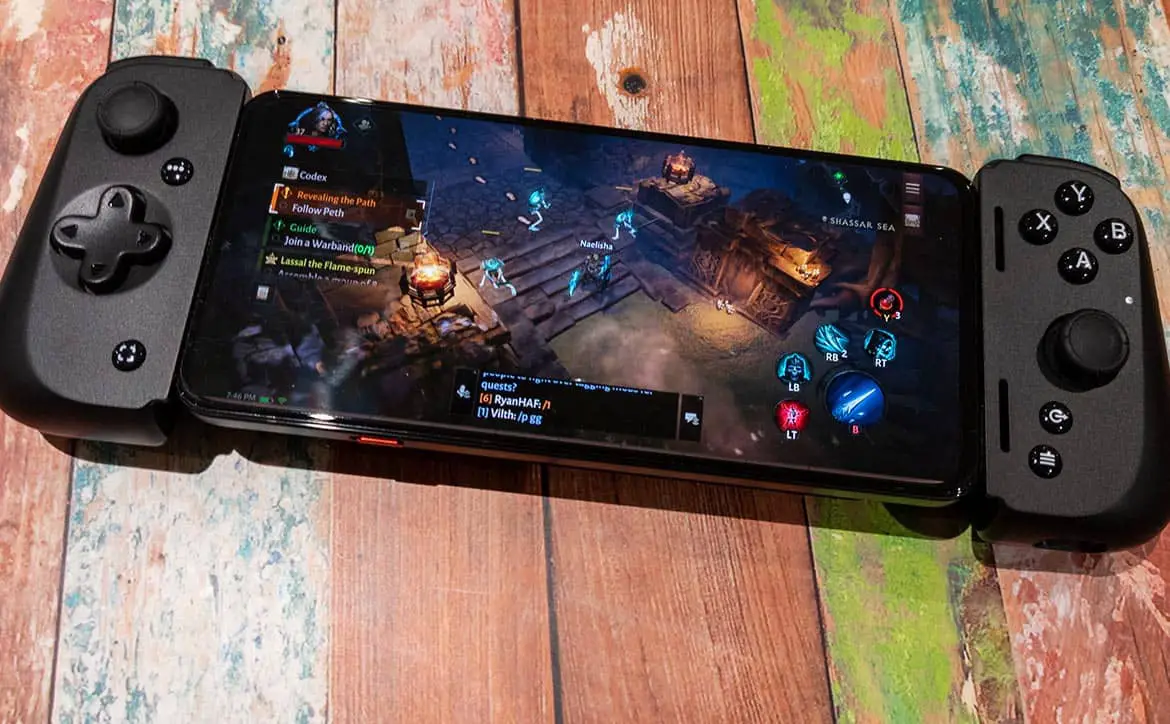
Mobile gaming has come a long way over the past few years, and so have mobile game controllers. At first, mobile phone clips and full-sized controllers were the norms. Then companies like Razer started to release different styled controllers that were more mobile-friendly.
Estimated reading time: 12 minutes
To start, the Razer Junglecat (released in 2019) was a case. Today, the company has released their newest mobile game controller, and its best one yet. However, that was only compatible with a very select number of phones, including the Razer Phone 2. At CES 2020, the Razer Kishi was unveiled, with support for even more devices. We reviewed both the Android version and iOS version here at Techaeris and, simply put, it was the controller to buy at the time.
Our Razer Kishi v2 review looks at the latest mobile game controller from the company, which features significant improvements across the board over the original version. Read on to see why it easily earns an Editor’s Choice Award here at Techaeris and, in my opinion, is the current king of mobile game controllers.
Table of contents
Specifications
The Razer Kishi V2 mobile game controller for Android we reviewed has the following features and specifications:
- Console-Quality Controls – with microswitch buttons and d-pad, analog triggers, and programmable multifunction buttons
- Universal Fit with Extendable Bridge – for seamless compatibility with almost any Android phone
- Stream PC and Console Games – go beyond mobile gaming
- Optimized for Maximum Performance – with ultra-low latency gameplay and passthrough charging
- Ergonomic Design – for a comfortable grip in a portable form factor
- Powered by the Razer Nexus app – for instant game discovery and management
- Two analog thumbsticks with clickable buttons (L3/R3)
- One mechanical D-pad
- ABXY face buttons
- Two triggers (L2/R2)
- Two bumpers (L1/R1)
- Two programmable multifunction buttons (M1/M2)
- Menu and Options buttons (labelled Start and Select in some games)
- Share button (requires Razer Nexus)
- Ports
- USB-C plug for phone connection
- USB-C port for passthrough charging only
- Charging indicator light
- Dimensions: 180.7 x 92.2 x 33.9mm
- Weight: 284g
- Compatibility
- Android™ 9 (Pie) or higher is required for full functionality
- Samsung Galaxy S9/S9+/S10/S10+/S20 Series/ S21 Series/S22 Series/Note 8/Note 9/Note 10/Note 10+
- Google Pixel 2/2 XL/3/3XL/4/4XL/5 Series/6 Series
- Razer Phone 1 and Razer Phone 2
- …and many more (max supported smartphone dimensions: 11.5 mm (thickness, including camera) x 170 mm (length))
What’s in the box
- Razer Kishi V2 mobile game controller
- 2x slim rubber pads
- Quick start guide
- Razer Snake stickers
Design
Before I get into the Razer Kishi V2’s design, here’s a quick peek at the differences between it and its predecessor:
- Stable sliding bridge instead of a flexible bridge
- Microswitch bumpers, ABXY buttons, and D-Pad instead of membrane
- Addition of two remappable microswitch bumpers
- Addition of an integrated share button
- Can be used with some phone cases
- More expansive Android device support
- Fully supported with the new Razer Nexus app
The Razer Kishi V2 is noticeably different than the original Kishi in design. While the original had a flexible bridge and was collapsable, the Kishi V2 has a sturdier, sliding bridge instead. This makes all the difference in the world and rectifies one of the minor issues we had with the original version of this mobile game controller. With the original, there was a bit of wiggle and the left side controller did have some back and forth flex when used, especially in tense gaming moments when you were gripping the controller tighter. That wiggle/flex is completely gone with the new version. While this means the Kishi V2 isn’t as compact as its predecessor, I’ll take that trade-off for stability any day of the week.
The Razer Kishi V2 mobile game controller has an Xbox controller layout. On the left controller are a clickable analog thumbstick with a convex pad, the microswitch D-Pad, an options button between the two, and a dedicated share/streaming button near the bottom. On the right hand side are your ABXY buttons near the top, a second analog clickable thumbstick with a convex pad, and a Razer Nexus and a menu button below that. The top of each controller has a thin flange that extends over the bridge for holding your phone in place while it’s connected. A connection/charging status LED is on the right hand side just below the face buttons. On the bottom edge of the right hand controller is a USB-C pass-through charging port, so you can charge your phone while gaming.
The expandable bridge connecting the controllers is 1 1/2-inches wide, just over 3 3/4-inches in length, and 3/8-inch thick. Fully extended, you’re looking at about 7 1/2 inches of bridge for your device, so you should be able to attach almost any USB-C Android smartphone to the Razer Kishi V2. Razer recommends a maximum phone length of 170mm (6.69 inches), likely for stability. On either side of the bridge, nestled into the side of the controller is a textured rubber pad. The left one has a cutout for camera bumps. Both pads are removable and a thinner, smoother one is included for thicker phones and phone cases. A USB-C connector is on the right side as well, for docking into your smartphone’s USB-C port.
Unlike the original Kishi, the width of your phone isn’t of concern anymore due to the new design. I mainly used the Razer Kishi V2 mobile game controller for Android with the larger REDMAGIC PRO 7 (review coming soon) with the thinner pads. Unfortunately, it didn’t work with the case but being an easy case to remove, it wasn’t the biggest deal. Being a larger phone, I was impressed with how solid and sturdy it felt within the case. On the other hand, I was able to use the controller with a Pixel 5 and the Google Fabric Case, as well as the TCL 10 Pro with its included case and both those devices felt just as solid as the larger one did.
The top edges of each controller are where you’ll find a trigger, bumper, and programmable multi-function button. Finally, the grips are slightly textured, giving the controller a less slippery feeling.
As for dimensions, the Kishi V2 is about the same height and thickness as the original — 3.62 and 1.33 inches respectively — but is a bit wider when collapsed at 7.11 inches.
From a design standpoint, the Razer Kishi V2 is a major improvement above the original version. Not only is it more stable, but it can accommodate way more Android devices with its new bridge design.
Ease of Use
To use the Razer Kishi V2, slide the top of your phone under the lip on the left hand side and push outwards. Once the bridge expands past the bottom of your phone, drop it in and let the controller contract until the USB-C connector is connected to your smartphone’s USB-C port. The status LED will flash briefly to show it’s connected and you should be able to fire up your favourite mobile game and start playing. If it doesn’t, try removing your phone case as it may be preventing a proper USB-C connection.
The M1 button is mapped to X and the M2 button is mapped to A by default. You can change those mappings with the new Razer Nexus app, which I’ll get to in the next section.
When you’re done playing, hold the bottom edges of your phone with one hand, pull on the right controller, and your phone will come free, allowing you to remove it and return the Kishi V2 to its closed state.
Software
With the Kishi V2, Razer has debuted a new app: Razer Nexus. It is meant to be a gaming hub for your mobile gaming experience. While a solid idea, other companies do a better job with their gaming hub app, like REDMAGIC.
At any rate, the Razer Nexus app is pretty basic. Upon launching manually or with the dedicated Razer Nexus button on the controller, the main screen shows large, blurred, square tiles of your installed games. If any are missing, like Game Pass was, you can easily add them. Scrolling down will give you suggestions for other games you can play. Oddly, these tiles are rectangular and have a higher resolution than the installed game tiles across the top.
Two buttons in the upper right corner overlay the homescreen as you scroll around. The first is a streaming button, allowing you to easily cast to YouTube or Facebook Live while gaming. The second is a hamburger menu icon. Tapping it takes you into the settings. On the settings screen, you can connect your Facebook Live or YouTube accounts for streaming, remap the M1/M2 buttons to ABXY, direction, L1, L3, R1, R3, or disable it altogether. Unfortunately, you can only remap those two buttons and not any of the others. You can also check and presumably update the firmware, access customer support and provide feedback.
When streaming, the Razer Nexus app casts the entire screen and not just the game you are playing. As such, you’ll have to keep that in mind if you start to scroll through notifications or other settings on your device while streaming. I thought the share button would quick toggle streaming but unfortunately, you have to launch the Nexus app, tap the streaming button, and go back to your game. When streaming to YouTube, I found that there was about a 20-second delay and I was limited to a 720p resolution even though the device I was using has an FHD+ screen. There didn’t seem to be any way to change this in the settings, maybe in a future update.
Finally, once the app is launched, the only way to kill it is to force close it in your phone’s system app settings. In addition, at the moment it has to be sideloaded as it isn’t on the Google Play Store. To download the app, you can hit the QR Code over on the Razer Kishi V2 product page.
Performance
Just how do all these design changes affect the mobile gaming experience? After not even an hour of using the Razer Kishi V2, I was in love. First and foremost, the additional stability and being able to game without having to contend with left side wiggle was much appreciated. The controller felt comfortable to hold as well, and the textured grips nestled nicely in the palm of my hands.
While most console game controllers still feature membrane buttons, there are some, like Razer’s Wolverine V2, that feature a microswitch button that offers a more tactile, clicky feel. I’m a huge fan of mechanical keyboards and the microswitch button on the Razer Kishi V2 reminds me of going from a standard membrane to a mechanical keyboard. In fact, I now find my regular Xbox controllers and the original Kishi a bit spongy when using (although they still work fine) after using the microswitch buttons on the Kishi V2.
On that note, the triggers and buttons are very responsive. If anything the triggers might be a tad sensitive and require very light pulls to respond. It would be nice if you could adjust the sensitivity, again, maybe this is something that can be done in a future firmware/software update. With its USB-C connection, you don’t have to worry about Bluetooth or wireless latency as there is practically none with the Kishi V2.
While testing, I ran quite a few games with the controller including the recently released Diablo Immortal. Asphalt 9 responded as I would expect and the number of Game Pass games I tried were much more enjoyable to play with a mobile controller than with touch controls. Whether it was games like Forza Horizon 5, Assassin’s Creed Origins, Sniper Elite 5, or Pac-Man Museum, I found the controls to be better than most mobile controllers I’ve tried in the past. There was the odd game where the thumbstick felt a bit sluggish but when I tried the same game with another mobile controller, I found the same thing so it’s likely the game itself.
As for the share button, tapping it will take a screenshot and store it in a Nexus folder on your device. Unfortunately, I couldn’t figure out how to record video clips while gaming without being in streaming mode.
Overall, the Razer Kishi V2 performs well. The only thing that could make it better is if, as mentioned, you could adjust the trigger and thumbstick sensitivity, as well as remap more than just the M1/M2 buttons. Another addition that would only improve the Kishi mobile game controller is if swappable thumbsticks of different heights or different thumbpads were available. Oh, and an included case or case option would be great as well!
Price/Value
Here’s the best part… the Razer Kishi V2 is priced at US$99.99, the same price as the Kishi V1 when it first went on sale. Of course, that means you can get the Kishi V1 at a discounted price (it’s currently sitting at $44.95 on Amazon), but to be honest, you’ll want to skip it and pick up the Kishi V2 instead. Given the build quality, compatibility, and performance, the Kishi V2 is well worth the price if you game a lot on your phone.
Photo Gallery
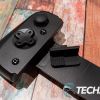
Wrap-up
I really liked the first iteration of the Razer Kishi and it has been my go-to mobile controller. However, I love the Kishi V2 and the changes and improvements Razer made to it. Mobile gaming is here to stay and with more games supporting controllers, the Razer Kishi V2 is hands down the best you can currently get if you have an Android device. Not only does it have a sturdier feeling, but the button and triggers have a much better tactile feel to them, and it’s compatible with even more phones. If you have an iOS device, a version for iOS should be available this fall.
In some of our articles and especially in our reviews, you will find Amazon or other affiliate links. As Amazon Associates, we earn from qualifying purchases. Any other purchases you make through these links often result in a small amount being earned for the site and/or our writers. Techaeris often covers brand press releases. Doing this does not constitute an endorsement of any product or service by Techaeris. We provide the press release information for our audience to be informed and make their own decision on a purchase or not. Only our reviews are an endorsement or lack thereof. For more information, you can read our full disclaimer.
Last Updated on June 16, 2022.

